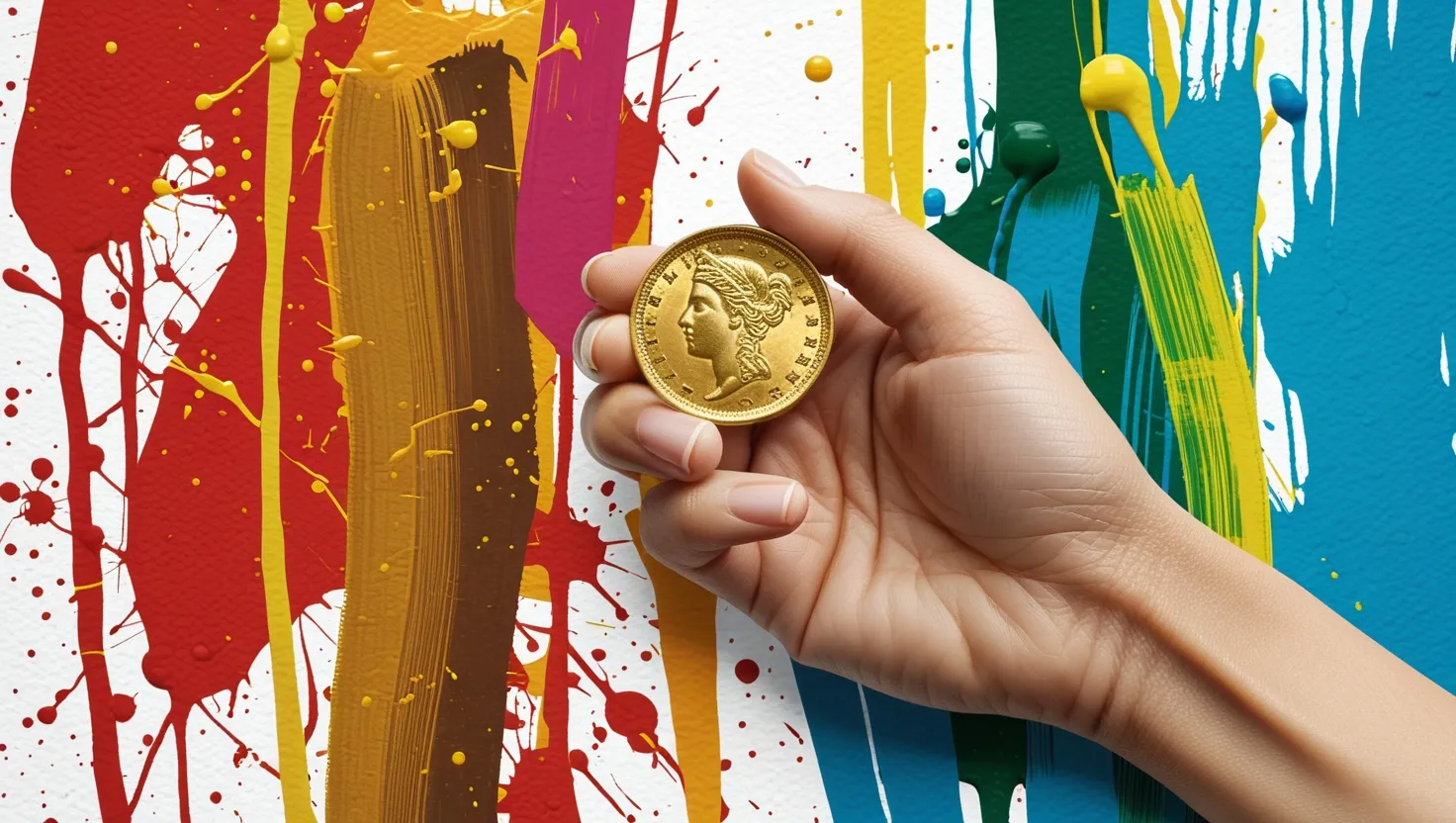As I sat in my small, cluttered studio, surrounded by half-finished paintings and scattered sketches, I couldn’t help but feel a mix of emotions when I received the news that my grandmother had passed away. She was more than just a family member; she was a mentor, a confidante, and the person who had first sparked my passion for art. Among the many things she left behind, one inheritance stood out – her vintage coin collection.
At first, the coins seemed like an odd legacy. I had always been more about colors and canvases than metal and mint marks. But as I began to sift through the collection, I found myself drawn into a world that was both familiar and foreign. Each coin told a story, not just of its own history, but of the people who had handled it, the events it had witnessed, and the journeys it had undertaken.
My grandmother’s collection was a treasure trove of rare and precious coins, each one meticulously selected over the years. There were classic United States coins – half cents, large cents, early nickels, and silver dollars – alongside precious metals like gold bullion coins and classic gold coins such as the $20 gold double eagle. As I delved deeper, I realized that this collection was not just a hobby, but a carefully crafted investment portfolio.
The first lesson I learned was the importance of diversification. Just as an artist needs a variety of colors to create a vibrant painting, an investor needs a diverse portfolio to mitigate risk. My grandmother’s collection was a perfect example of this. By including a range of coins from different periods and metals, she had created a portfolio that was resilient to market fluctuations. This principle was not new to me; in art, diversity in style and medium can keep your work fresh and engaging. But applying it to investments was a revelation.
As I began to research and learn more about each coin, I discovered the concept of asset appreciation. Rare coins, unlike many other investments, have a unique characteristic – their supply is diminishing. Coins are not minted in the same quantities they once were, and many have been lost, melted down, or simply worn out over time. This scarcity can drive up demand and, consequently, prices. It was fascinating to see how this principle mirrored the art world, where limited editions and unique pieces often appreciate in value over time.
Investing in rare coins is not a game for short-term gains. It requires patience and a long-term perspective, much like the process of creating art. You cannot rush a masterpiece, and similarly, you cannot expect to flip a coin quickly for a profit. The rare coin market can be volatile, with demand for certain coins waxing and waning over time. But with the right knowledge and strategy, it can provide stable and significant returns.
One of the most surprising aspects of rare coin investing was the liquidity of the market. Unlike other collectibles, rare coins have a well-established pricing structure and frequent auctions. This meant that if I needed to sell a coin, I could do so relatively quickly and receive immediate payment. It was a comforting thought, knowing that my grandmother’s collection was not just a sentimental heirloom but also a liquid asset.
As I continued to learn, I encountered the world of coin auctions and dealers. It was a complex landscape, filled with pitfalls for the unwary. Auction companies charge significant commissions, and dealers often have their own agendas. But with the right knowledge and caution, it was possible to navigate this world successfully. I learned to trust my instincts and arm myself with as much information as possible before making any decisions.
The process of valuing and investing in rare coins also sparked a creative resurgence in me. Each coin had a story, a history that I could weave into my art. I began to see the coins not just as financial assets but as inspirations for my paintings. The intricate designs, the historical contexts, and the people who had owned these coins before all became fodder for my imagination.
One particular coin, a $20 Saint-Gaudens gold double eagle, caught my eye. Its beauty was not just in its design but in its history. Minted during a time of great change in America, it represented a era of growth and innovation. As I painted, I found myself capturing not just the coin’s physical beauty but the essence of the time it came from.
In the end, my grandmother’s vintage coin collection became more than just an inheritance; it was a legacy that taught me valuable lessons about investment, diversification, and the appreciation of assets. It also reignited my passion for art, providing a new source of inspiration and creativity. As I look at my paintings now, I see not just colors and shapes but stories, histories, and the enduring value of something truly rare and precious.
Financial stability and creative inspiration are not mutually exclusive; they can coexist and even enhance each other. My journey into the world of rare coins has shown me that sometimes, the most unexpected inheritances can lead to the most profound discoveries. And as I continue to paint and invest, I am reminded of the wisdom my grandmother once shared with me: “The true value of anything lies not just in its monetary worth, but in the stories it tells and the people it touches.”






